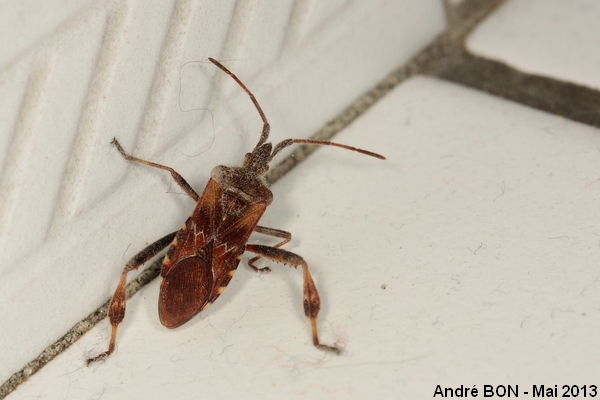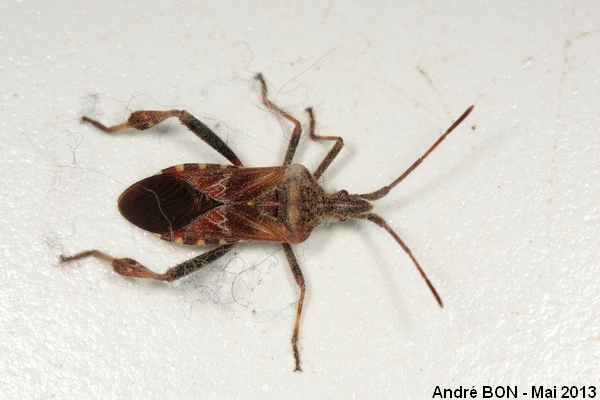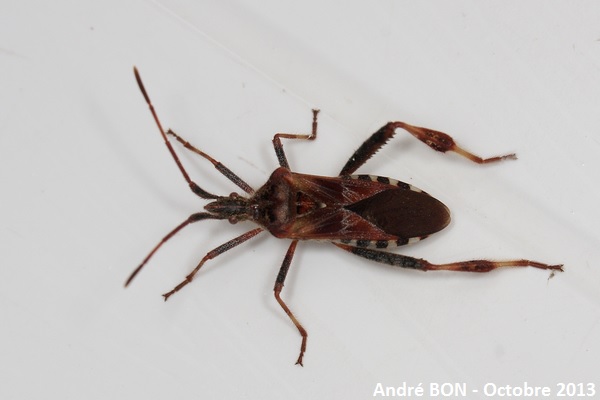



| Western Conifer Seed Bug (Leptoglossus occidentalis (Heidemann, 1910)) |




|
|
Scientific name: Leptoglossus occidentalis (Heidemann, 1910) Common name: Western Conifer Seed Bug Other names: Leaf-footed Conifer Seed Bug French name: Punaise américaine du pin Order: Heteroptera Family: Coreidae Wingspan : 16-20 mm, males are smaller than females. Biotope: Coniferous forests, parks and gardens with conifers. Geographic area: Originated from the regions bordering the Pacific Ocean in North America, west to the Rocky Mountains, this seed bug first extended its range (starting from 1950) towards the Atlantic coast (reported in New York in 1990). It has been accidentally introduced to Europe with wood transportation (reported in 1999 in Italy, in 2005 in Corsica, in 2006 in mainland France, in 2007 in England and Poland, etc.). This species also moves by long distance flights. Observation period : There is one generation per year. Adults walk out of their winter retreat late May early June to mate and lay their eggs on conifers. Young bugs appear about ten days after and undergo 5 moults to reach the adult state at about mid-August. These adults may enter into buildings to overwinter. |
The Western Conifer Seed Bug shows a rather elongated shape and a reddish brown general colour. The hemelytra (hard part at the base of the elytra) are crossed by a white zigzag line drawing a W-shape. The hind femora are spiny. The hind tibias show a flattened oval-shaped enlargement extending on two thirds of the total tibia length. The head is elongated, the eyes are reddish. The first of the four articles of the thin antennae (called scape) is slightly swollen. The upper side of the abdomen is yellowish orange with dark spots. This bug is totally harmless for people. It may only emit some bad smell when it feels threatened. |
| [To know more about the Western Conifer Seed Bug] [Next picture] [Top] |

|
Here is a clandestine visitor of the house which wakes up after having spent the winter in a warm place. Its presence is explained by the few pines that grow in my garden. |
| [To know more about the Western Conifer Seed Bug] [Next picture] [Previous picture] [Top] |

|
Viewing the dust stuck on this bug I think it comes out of a hiding place where the cleaning is not done very often. This is a large size bug, I have measured 19mm for this one. |
| [To know more about the Western Conifer Seed Bug] [Next picture] [Previous picture] [Top] |

|
The hot days are gone, the Western Conifer Seed Bugs are looking for a way to enter the house to overwinter. |
| [To know more about the Western Conifer Seed Bug] [Previous picture] [Top] |

|
Another view of the same specimen. |